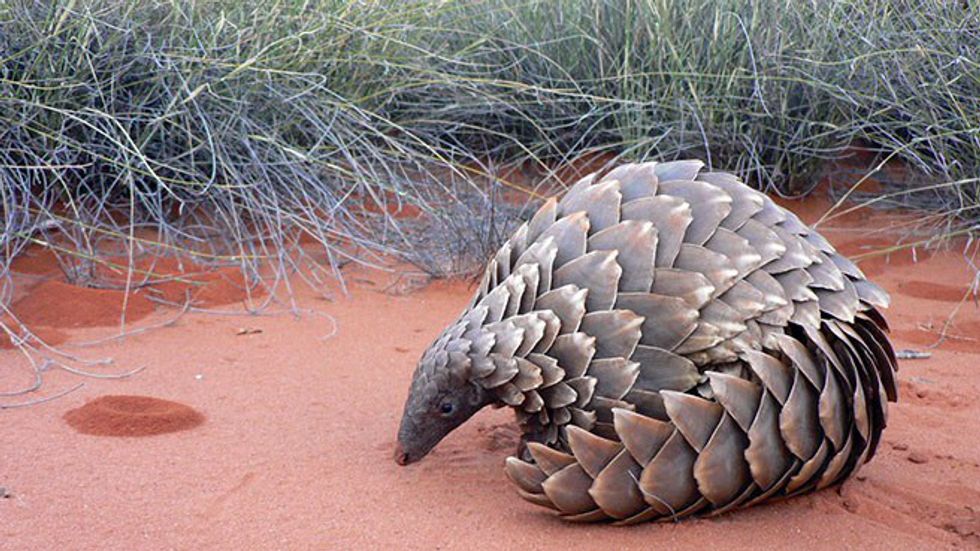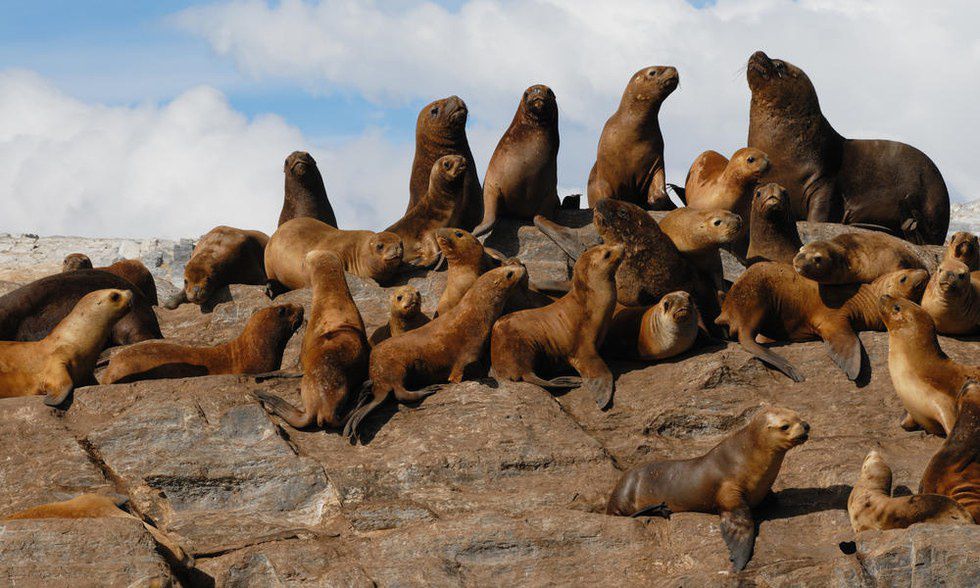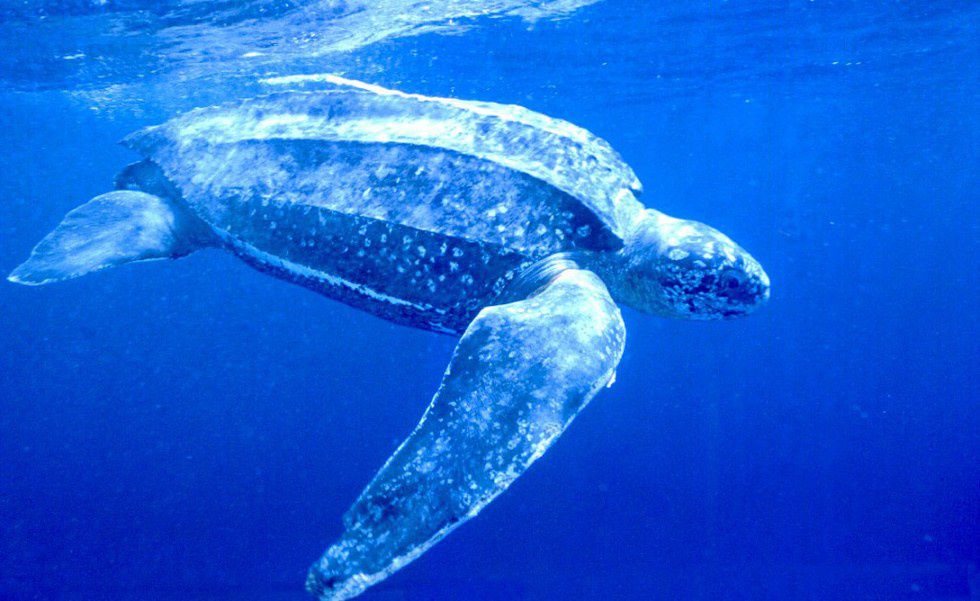So far in science, humanity has discovered approximately 1.2 million species. These species include all five kingdoms of life: animals, plants, fungi, protists, and monera. Despite having discovered so many, scientists estimate Earth is home to some 8.7 million species. Unfortunately, due to today's extinction rate, many species will die out before they are even discovered.
Today, roughly 16,900 known species of plants and animals are threatened by extinction. Organizations like the World Wildlife Fund have engaged in conservation efforts in order to preserve these species. Here are 10 animal species that are currently battling extinction:
1. Amur Leopard.
The Amur Leopard is threatened by poaching, deforestation, and inbreeding. Their gene pool has been so reduced that the entire population is at risk of inbreeding depression. This means that future generations of Amur Leopards will have poorer genes that make them less suited for survival. Today only an estimated 70 individuals exist in the wild.
These leopards can run at speeds up to 37 mph and can weigh as much as 106 pounds. These impressive athletes have been reported to jump distances more than 19 feet horizontally and up to 10 feet vertically.
2. Pangolin.
These scaly little creatures can curl up into a ball as a defense mechanism. Unfortunately, it's not an effective technique for fending off extinction. Today, all eight species of pangolin are endangered. Pangolins are hunted for the scales and meat primarily in Asia, but incidences are rising in Africa as well. This walking pinecone is protected by both national and international laws, but it is not enough, poachers still pose as a major threat to this animal.
3. Vaquita.
The Vaquita is the world's most rare marine mammal. These creatures often get caught in nets by illegal fishing operations and drown. In the last three years, more than half of the population has been lost. This animal is only 5 feet long and approximately 120 pounds. It has been estimated that fewer than 100 individuals remain in the wild.
4. Western Lowland Gorilla.
This mammal, standing at up to 5.5 feet tall and weighing 440 pounds, is currently listed as critically endangered. Due to poaching and disease, their numbers have declined by approximately 60 percent in the last 20 to 25 years. It has been estimated that even if all threats were removed, it would take the gorilla population some 75 years to recover.
5. Yangtze Finless Porpoise.
These marine mammals make their home primarily in the longest river in Asia, the Yangtze. They shared their habitat with the Baiji dolphin, which was declared extinct in 2006 due to human interference. Unless humans make an effort to change the outlook of the porpoise's future, they will soon meet the same demise as the Baiji dolphin.
6. Sumatran Tiger.
This is the smallest species of tiger to still exist, these predators weigh anywhere from 165 to 308 pounds. Their still impressive size does not ward off poachers. In Indonesia, anyone caught hunting tigers can face both jail time and serious fines. Despite these efforts, poaching show no signs of decline, and the demand for tiger parts and products still exists.
7. Borneo Pygmy Elephants.
Don't let the word 'pgymy' fool you, these elephants range anywhere from 8.2 to 9.8 feet tall. However, these elephants are equipped with baby-cute faces, large ears, and tails so long that they occasionally drag on the ground. Their cuteness does not keep the out of confrontations with humans, though. Due to conflicting habitats, disputes between man and these elephants and humans erupt, killing hundreds annually.
8. African Wild Dogs.
Unfortunately, this is one of the world's most endangered mammals. Due to the fragmentation of its population, they face inbreeding threats that will lead to reduced levels of biological fitness. The African Wild Dog forms packs ranging anywhere from 10 to 40 individuals strong and can reach speeds of more than 44 miles per hour.
9. Sea Lions.
Due to changes in ocean currents caused by climate change, the sea lion's prey abundance has been reduced. With less food to eat, numbers grow smaller. Disease and fisheries pose as threats to their populations as well. Sea lions are known for climbing aboard boats to get some rest; their impressive weight of 400 pounds sometimes causes the boats to sink. Fishers have set up barbed wire fences as barriers, which often lead to injuring the sea lions. The WWF has since installed floating bases in the water for the sea lions to rest to help lower the rate of these incidences.
10. Leatherback Turtles.
This is the largest species of turtle, weighing up to 2,000 pounds. They're migratory, crossing both the Pacific and Atlantic Oceans, making them have an impressive distribution. Despite this, their numbers have declined due to a period of unrelenting egg collection and fisheries.
To help with conservation efforts, you can visit the World Wildlife Fund's homepage to donate or to keep updated with the latest news!






























 sunrise
StableDiffusion
sunrise
StableDiffusion
 bonfire friends
StableDiffusion
bonfire friends
StableDiffusion
 sadness
StableDiffusion
sadness
StableDiffusion

 purple skies
StableDiffusion
purple skies
StableDiffusion

 true love
StableDiffusion
true love
StableDiffusion
 My Cheerleader
StableDiffusion
My Cheerleader
StableDiffusion
 womans transformation to happiness and love
StableDiffusion
womans transformation to happiness and love
StableDiffusion
 future life together of adventures
StableDiffusion
future life together of adventures
StableDiffusion





















